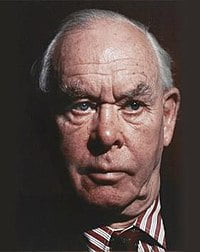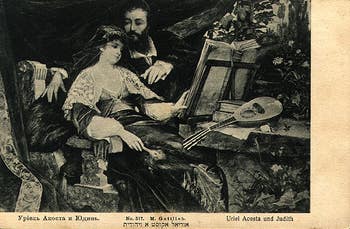Conversation 18: How a caregiver becomes a significant internalized character for a baby in the first year of its life, before the language acquisition
Greetings
In a previous conversation we hypothesized that a face serves as an anchor or as a nucleus for the formation of an internalized character. Unfortunately, this has not been scientifically tested yet. However, this time we will open with the review by Eleanor McKone and her colleagues from 2012, which demonstrates that the data no longer support the theory in which the face representation at birth is a sort of innate schema only, while good face diagnosis at the individual level requires many years of practice to achieve. Instead, it now appears that infants are born with a developed ability to represent the structure of upright faces [that are not inverted], which supports the individuation of faces, and the ability to process holistically, and not just though directing attention to faces.
Historically, these researchers note, it was claimed earlier that individuation in the face recognition develops very slowly, and does not reach adult levels until puberty, while experience is the driving force behind this prolonged improvement.
Elinor McKone and her colleagues [Elinor McKone, Kate Crookes, Linda Jeffery, Daniel D Dilks. A critical review of the development of face recognition: experience is less important than previously believed. Cogn. Neuropsychol. 2012; 29(1-2): 174-212.] challenge this view based on a comprehensive review of behavioral and neural findings. Their results show a qualitative presence of all the key phenomena related to face individuation (encoding of new faces, holistic processing effects, face space effects, face-selective responses in brain imaging) at the earliest ages tested, typically 3-5 years of age and in many cases even in infancy.
The results also argue for quantitative maturation in early childhood, based on a growing body of relatively new behavioral studies, as well as event-related potential (ERP) studies, but not functional magnetic resonance imaging (fMRI) studies. The evidence comes from studies on twins, families, newborns, monkeys with impairments in visual perception, critical periods during development after which it is not possible to develop a sufficient ability to recognize faces and the developmental states of the reduction in the ability to individually recognize faces of members of other races.
These authors conclude that the role of experience in the development of face recognition mechanisms has been overestimated. The emerging picture is that the mechanisms supporting the individuation of the face become mature relatively early, are consistent with children's social needs for reliable human identification in everyday life, and are also largely driven by our evolutionary history.
The authors note that in adults, the FFA [the face region of the cerebellar nucleus known as the fusiform] in the middle gyrus responds 2-3 times more strongly to the recognition of faces than to the recognition of object differences (houses, hands, flowers, cars, birds)
The authors also add that the importance of face recognition skills in everyday life is highlighted by the social difficulties encountered when these skills are impaired (eg, in developmental prosopagnosia or autism spectrum disorder). The ability of adults to individuate thousands of faces is supported by special perceptual processes, usually applied to faces but not to other visual objects, and by special neural mechanisms, including face-selective areas in the cerebral cortex.
Overall, these authors conclude that these results provide a compelling body of evidence that there is both a genetic and an innate contribution to face recognition. It is important to note that evidence from all techniques – hereditary, neonatal, from the existence of critical periods and perceptual narrowing – currently supports such contributions to the individuation of faces, and also to one of the main support mechanisms that have long been claimed to be "special" to faces – that is, holistic processing. As for the breadth of the innate representation, the individuation of monkey and sheep faces that exemplify humans, and of human faces that exemplify monkeys, claims that this ability appeared not long ago in evolution and may be part of a general recognition mechanism available to all mammals.
These authors then move on to discuss the effects of experience in infancy on face recognition:
One effect of experience across infancy in their view is a qualitative shift in viewpoint effects, with identity details encoded in frontal faces and three-quarter views from birth, but encoding of profile views emerges only after mid-infancy.
Secondly, there is a perceptual reduction or decrease in the range of abilities to recognize faces that occurs in infancy. The perceptual reduction represents a loss of ability that goes along with the accumulation of experience; e.g. young infants can rely to something (individual faces of races and species that do not belong to them and do not experience seeing them) that is getting lost in older infants as a result of acquiring experience in the first months of life. The probable functional reason for the loss of discrimination in categories to which the infant is not exposed is to tune the system towards categories of faces in which the infants experience and thus improve the diagnosis within the race and language to which the infants are exposed.
Since the internalization of characters begins quite early , the findings of this review do not contradict our hypothesis that the face recognition mechanism serves as an anchor for the internalization of characters.
We will move on from here to ask how an internalized character becomes significant for a baby in the first developmental stages of his first year of life even before the acquisition of language [symbolic stage]
Here we hypothesize that as a general rule this character has to contribute to physical and mental balance concerning the needs of the individual or on the contrary that it will be a character that significantly violates this balance.
So we have to recall what the baby's needs are in his first year of life.
In order to answer this, we will first discuss briefly the hierarchy of human needs.
The psychologist Avraham Maslow described the sequence of needs according to the order of importance of different levels where a person first seeks the realization of a previous level before turning to the realization of the next level.

Avraham Maslow [1970-1908]
Physiological level – at this level, a person needs food, drink, rest and to satisfy other needs, which are necessary for the normal existence of the body.
A] Level related to security At this level there is a need to protect against external threats with security and stability.
B] A level related to love and belonging – this level meets the need for social belonging.
C] A level associated with respect in approval and recognition – from the surrounding society.
D] A level related to self-realization and finding meaning.
Maslow claimed that the hierarchical model is suitable for every person, however, he realized that in a small part of societies the order in the pyramid of needs can be different, for example Van Gogh, for example, whose need for self-fulfillment as a painter even outweighed his basic needs.
Another researcher and thinker John Bowlby, a British psychoanalyst, who in the years 1969-1982 with his Canadian partner Mary Ainsworth devised the Attachment Theory describing attachment between the baby and the caring parent, believed that the baby has an innate and general need to contact at least one caregiver, and that this relationship is of great importance for the normal social and emotional development of the baby [in contrast to the psychoanalytic theory of Sigmund Freud, who believed that satisfying impulses and physical needs motivates the baby].

John Bowlby [1908-1990]
In our own theoretical thinking, we assume the following flexible hierarchy of needs that can change in certain circumstances:
A] Satisfying basic needs
B] Protection against personal survival threat
C] Need to belong to a group
D] Protection against group survival threat
As mentioned before, we hypothesized that as a general rule, a significant figure that will be internalized will be the one that contributes to physical and mental balance vis-à-vis the needs of the individual or, on the contrary, will be one that significantly violates this balance.
The primary internalized significant figure is therefore created by the extent to which this figure is significant in terms of satisfying the basic needs of the baby [if it is the mother who cares, etc.] such as the need for food, drinking, bodily contact, temperature regulation, and more. The baby internalizes in the first place a character that satisfies its needs more than others in its environment.
With the development of the cerebral nucleus called the amygdala, the baby's feeling of fear becomes an important part of the internalized character’s development. Now things get more complicated, not infrequently the baby feels a threat to its survival. And in this context the protective figures and those that threaten personal survival become very significant and internalized.
The amygdala [Latin of almond] is recognized as a component of a group of brain structures collectively known as the limbic system, and is thought to play important roles in emotion and behavior. Simply put, the amygdala is best known for its role in processing the emotion of fear and the memories associated with it.
[See Benarroch EE. The amygdala: functional organization and involvement in neurological disorders. Neurology. 2015 Jan 20;84(3):313-24.]
We note that behaviorally, fear of heights and fear of strangers appear functionally around the later part of the first year of life [seventh month or so onward] and are considered to signal the maturation of the amygdala. Young children begin to show fear though iris widening around 7 months of age and it has been suggested that the amygdala is involved because iris widening in adults is strongly correlated with amygdala activation.
[Sullivan RM, Opendak M. Neurobiology of Infant Fear and Anxiety: Impacts of Delayed Amygdala Development and Attachment Figure Quality. Biol Psychiatry. 2021;89(7):641-650. doi:10.1016/j.biopsych.2020.08.020]
It is possible that sometimes at this stage the feeling of intense fear even surpasses in importance such basic needs as hunger, thirst, etc.
It might be that the threatening character [depending on the level of threat] that is now internalized will rise in the hierarchy of internalized characters above the character or characters that satisfy the basic needs.
For example, if the baby has a threatening figure such as a father or a harsh and cruel mother and the baby is anxious about its existence, then, along with the development of the amygdala around the sixth month of life the baby might take this figure into account and include it in the directory of its internalized characters as a significant one.
So far we have talked about the relationship between satisfying basic needs and protection against a personal survival threat on the one hand and the internalization of figures that become significant in the baby's inner world on the other.
We will now discuss the need to belong to a group, which is actually a social need. It seems that one of the signs of the appearance of this need is the social smile that appears in the baby.
Social smiling in babies is an important milestone for the development of intentional and social communication and the development of social motivation and social language. Several studies based on functional brain imaging have confirmed the role of smiling in children as a contributor to social connection. The social smile of two-month-old babies invites adults to communicate with them. In general, all normal human infants show a social smile, which is, in fact, their first real sign of social responsiveness. The social smile is probably innate in the human race. We note that at the age of six months or so, babies begin to respond socially to certain people who become the targets of significant attachment for them.

Social smile
So it seems that the social need is activated relatively early in human life with the appearance of the social smile. This need makes it possible to internalize figures that have social importance for the baby.
[In autistics at the lowest part of the autistic spectrum there may be no internalization of figures and in those at the highest part of the spectrum there is apparently an internalization of figures that are relatively underdeveloped and schematic]. In this context we note that social isolation is very threatening and it seems that without a reference group the individual has a problem continuing to live (think here of Voodoo death, for example).
We will stop here, for a brief moment, and recall the cases of Spinoza and Uriel Acosta from the 17th century in order to clarify and emphasize the great importance of the social reference groups that surround basically each of us.
Baruch Spinoza (Benedict de Spinoza) in adolescence began to neglect his Jewish studies. At first he turned to the books of the Jewish philosophers of the Middle Ages, and later he also began to engage in field studies, and gradually he even approached educated Christian circles around him, and in the Jewish community the spirits raged against his behavior and lifestyle, which finally led to the announcement of his boycott in 1656, as a result of which he was expelled of being a member of the Jewish community in Amsterdam. Starting in 1660, Spinoza distanced himself from public activities, but he was not alone, but had a wide circle of friends, with whom he kept in touch and exchanged letters.

Script on the boycott on Spinoza

Baruch Spinoza (1632-1677)
The case of Gabriel Acosta, who was born as a Christian in the nineties of the 16th century in Portugal under the rule of the Inquisition, is different. His father was the scion of an old Catholic family, while his mother was of Maranos origin (a nickname for Jewish families who converted to Christianity). At some point during his studies, through contact with other Maranos, he began to convert to Judaism as he perceived it. And from the threat of the Inquisition, he and his family fled to Amsterdam. He officially converted, and changed his name to Uriel. There he discovers that Judaism in the Amsterdam version is similar to Catholicism and different from Judaism as he perceived it, and launched an attack on the principles of Rabbinic Judaism. And after refusing the demand of the rabbis of the Amsterdam community to withdraw his letters, he was banned altogether. He suffered for seven years as a prisoner, without a single friend and heartbroken. At this point, Acosta publicly confessed his "sins" and received the authority of the rabbis. However, he found it difficult to receive this authority completely and was finally excommunicated a second time for another seven years in severe solitude with no friend while being constantly humiliated. A state of terrible humiliation. Finally he writes the book "The Story of My Life" and shoots himself to death.

Uriel (Gabriel) Acosta and Judith
These two cases emphasize the importance of social reference groups for the mental health and wellbeing of a person. While the first boycott’s victim Spinoza had reference and support groups, not so was on the tragic case of Gabriel Acosta.
The next need in the hierarchy of needs we proposed is the need for group survival. We note that there may be a situation in which this need becomes even more important than the need for individual survival. In a time of war for example. The individual survival instinct may be found to be hierarchically below the group survival instinct. This is how soldiers sacrifice themselves for the sake of saving the group or fighters who find it difficult to return to their lives and sometimes slide into severe depression when they were saved but their group of fighters were severely and even fatally injured in the combat.
To conclude, the goal of the developing baby is to balance physical and mental needs. A character or characters that contribute to this or, on the contrary, significantly harm it, become important for the baby and are internalized as significant figures that contribute to protection against the violation of the physical and mental balance or, on the contrary, harm to this balance.
It seems that in the inner world of the baby, it is desirable that supporting and strengthening internalized characters are created that weaken the influence of the threatening internalized images. The supporting characters are therefore in a kind of eternal competition with the threatening ones.
The question arises, is an internalized character that contributes to the threat or the one that contributes to fulfilling needs more important in the internal hierarchy of internalized characters?? It seems to us that it depends on the relationship between the group of internalized characters that support this character and how much significance is ascribed to them. Various psychoanalysts point out that it is important for the baby to achieve so called “BASIC TRUST”, translated into our language it is said that basic trust is the same as the situation in which the supporting and reinforcing internalized figures increase their influence on the threatening internalized figures.
yours
Dr. Igor Salganik and Prof. Joseph Levine
 Prof. Joseph Levine, M.D. is an emeritus associate professor in the Division of Psychiatry, Faculty of Health Sciences, Ben Gurion University in Israel. Prof. Levine is a certified psychiatrist with clinical experience in controlled trials of adult psychiatric disorders and in psychotherapy. He was awarded a NRSAD independent investigator grant for the study of Creatine Monohydrate in psychiatric disorders -- mainly Schizophrenia. He resides and treats patients in Tel Aviv and all of central Israel.
Prof. Joseph Levine, M.D. is an emeritus associate professor in the Division of Psychiatry, Faculty of Health Sciences, Ben Gurion University in Israel. Prof. Levine is a certified psychiatrist with clinical experience in controlled trials of adult psychiatric disorders and in psychotherapy. He was awarded a NRSAD independent investigator grant for the study of Creatine Monohydrate in psychiatric disorders -- mainly Schizophrenia. He resides and treats patients in Tel Aviv and all of central Israel.
Leave a comment